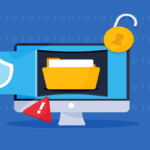Knowing how to identify your target audience is essential to brand success when it comes to marketing. Without a defined target audience, your plan gets fuzzy and your brand voice drifts, making it difficult to maintain a consistent tone across your brand. Building brand recognition and getting your content, goods, and services viewed will be difficult as a consequence.
Tips To Identify Your Target Audience

1. Examine Your Data
You can learn how to identify your target audience by knowing about the individuals who regularly engage with your brand from your statistics. Examine the important demographics of your email list, social media following, and existing clients. On average, learn specifics like:
- How old they are (in relation to their life stage).
- Their residence (time zone for content scheduling).
- What language do they speak?
- Their areas of interest.
- If they are parents.
Find out which social media sites your target demographic spends the most time on. Enhance your marketing efforts on those platforms afterward. You may use the analytics tools available on each social media network to see how your followers are interacting. You may learn more about the behaviors of your audience by using tools like Google Analytics or reputable scheduling platforms.
2. Construct Buyer Personas
Based on market and audience research, a buyer persona is a fictionalized description of your ideal client. By giving your target audience a human face, buyer personas enable you to better target your marketing campaigns. Age, gender, income, career, hobbies, pain areas, and purchase patterns should all be taken into account while developing customer personas.
When it comes to developing buyer personas, Coca-Cola excels. Numerous customer niches have been found via in-depth research, and, for instance, Coca-Cola has used detailed segmentation research to identify audience niches and tailor campaigns for each group. Because of this knowledge, Coca-Cola is able to create product offers and customized advertising campaigns that appeal to each character, expanding its market reach and boosting sales.
3. Know Your Competition
As one of the steps to finding your target audience, examine your immediate rivals who share your demographics. How do they interact and communicate with their followers? Finding out what other businesses are doing might assist you in deciding how to engage your audience going forward. You may refine your marketing approach by learning from your competitors.
On the other hand, observe what they aren’t doing. You may discover that there are gaps in their approach that you might improve upon in your own. Are there any particular content pieces or captivating marketing strategies that you may use to engage your audience? It may surprise you to learn that researching your competitors may help you identify your target market, but it’s a powerful tactic.
4. Use Social Media Insights
Social networking sites may provide valuable information on the preferences, interests, and habits of your target audience. You can learn a great deal about who interacts with your brand and how they see it by analyzing indicators like audience replies and engagement rates.
Analyzing engagement data reveals who interacts with your content and which types of posts your audience finds most engaging by examining data from platforms where they spend time. This might assist you in targeting certain audience groups with your marketing messaging and new product releases.
5. Try Social Listening
How is your brand being discussed online by your audience? What do they have to say about you? What kind of impact do you make on those who interact with you both often and infrequently? You may get a sense of how you’re coming across to your consumers and followers by engaging in social listening.
To know how to identify your target audience, you may use it as a tool to enhance your customer service and marketing. To modify your marketing approach, it may also assist you in identifying the people who are most receptive to your brand. You may monitor online discussions about your brand with the use of tools like Brandwatch, Audiense, Agorapulse, and Awario.
6. Gather Customer Feedback
You may get important insights into your customers’ wants, preferences, and problems or challenges by interacting directly with them via surveys, reviews, feedback forms, or one-on-one interviews. You can better satisfy the demands of your customers by actively listening to their comments and adjusting your goods, services, and strategy accordingly.
Amazon places a lot of emphasis on consumer reviews. It collects useful information about product preferences, consumer happiness, and areas for development via features like ratings and reviews. In addition to helping Amazon improve its product selection, this data also helps the company make sure that its marketing tactics are effective in reaching its target market.
Read More: 9 Benefits of Instagram DM Automation for Brands
7. Think About Your Marketing Channels
After creating your consumer personas as one of the steps to find your target audience, look at their routines. Think about how consumers behave and where your prospective clients spend their time, such as the platforms or websites they often use. Think about the kind of message that has the most effect on them throughout that process.
Older customers may prefer professional networks like LinkedIn or established news sources; younger consumers are more likely to go toward social media sites like TikTok. You may begin developing your marketing materials as soon as you determine which marketing channels would work best for your campaigns.
8. Do Some Market Research
To stay aware of trends affecting your customers and industry, market research is crucial. It helps you to obtain more profound insights into the requirements, habits, and preferences of your target audience. By understanding their issues, searches, and purchase behaviors, you may build goods or services that better satisfy their expectations.
Moreover, market research helps you comprehend industry developments and forecast future needs, keeping your organization competitive. Analyzing your opponents is another vital part. Identify your top rivals, research their techniques, and assess the audience they are targeting.
This study might show possibilities for improvement or undiscovered markets. Understanding where your rivals are communicating with prospective clients may help direct your own outreach efforts, allowing you to create better connections and boost your market position.
Importance Of Defining Your Target Audience
Ultimately, your ability to identify your target audience determines every aspect of your marketing campaign across all platforms. A carefully defined audience dictates your brand’s language, tone, style, and overall identity, maintaining consistency across all platforms.
Knowing precisely who you are communicating to helps you to develop messages that connect with their individual wants, tastes, and situations. This tailored strategy makes communication more successful and establishes better ties with your audience. When your content is relevant and tailored, your chances of earning a greater return on investment (ROI) and better conversion rates grow dramatically.
Instead of spending resources attempting to appeal to every imaginable group, you concentrate your efforts on the audience most likely to interact with and buy from you. This targeted method stops your message from being diluted and helps you stand out in a competitive environment.
While it’s feasible to market to a larger audience beyond your core target, selecting your ideal client assures higher engagement and more predictable sales growth. Over time, this technique cultivates a community of dedicated superfans who not only return for repeat purchases but also actively promote your business to others.
Their word-of-mouth recommendations might attract new clients who have similar interests and beliefs, increasing your reach naturally. Defining and understanding your target audience is not a one-time activity but a continuous process.
As markets alter and consumer habits develop, consistently assessing your audience helps you remain aligned with their evolving demands. By keeping this focus, your marketing initiatives will stay crisp, powerful, and relevant, delivering sustainable growth and long-term success for your organization.
FAQ
Q: Which identifiers apply to the target audience?
A: Analyzing your client data is the simplest method to determine your target audience after your firm is operational. Demographic components, including age, gender, profession, education level, and marital status, might be used for this.
Q: Which techniques are used to identify targets?
A: Combine quantitative data (analytics, CRM, keyword research) with qualitative inputs (interviews, surveys, social listening).
Q: Why is knowing your target audience important?
A: Since it enables you to customize your efforts, maximize your budget, and ultimately raise the chance of success, determining your target audience is essential for successful marketing. You may pick the best marketing channels, produce more compelling and relevant content, and forge closer bonds with your clients by being aware of their wants, needs, and pain areas.








some genuinely terrific work on behalf of the owner of this website , perfectly outstanding written content.
That’s a wonderful compliment—thank you! Your feedback helps make the experience even better!